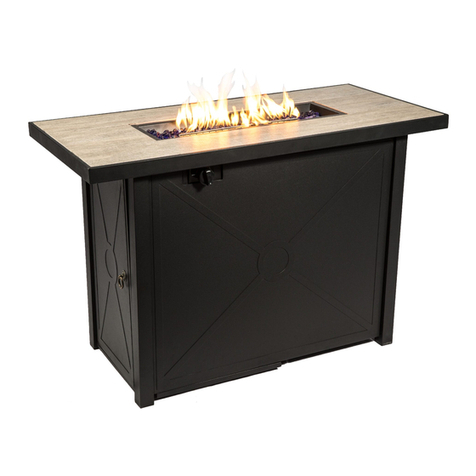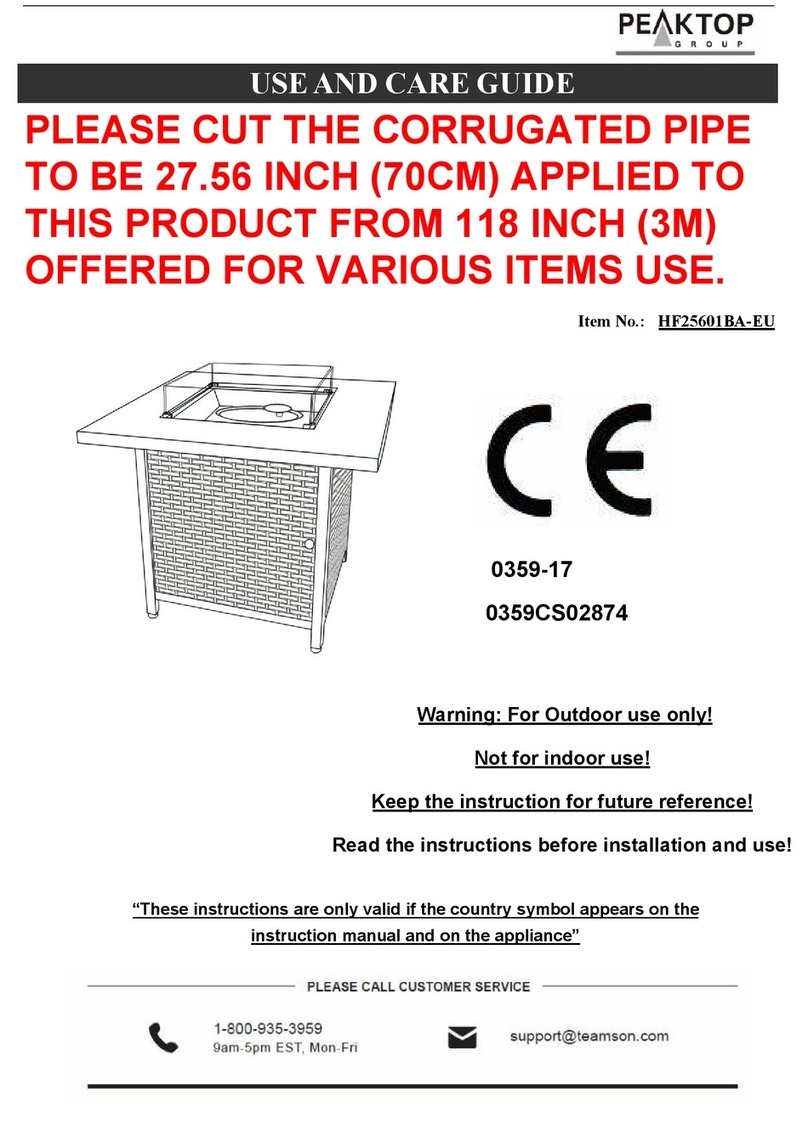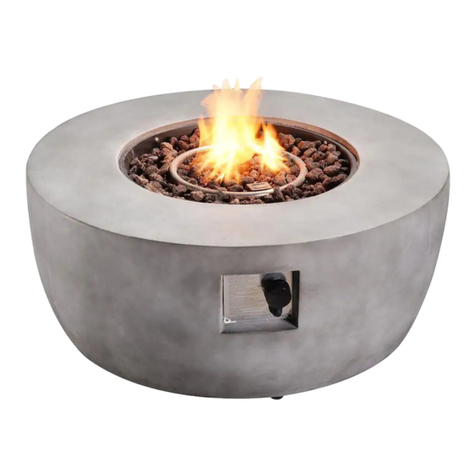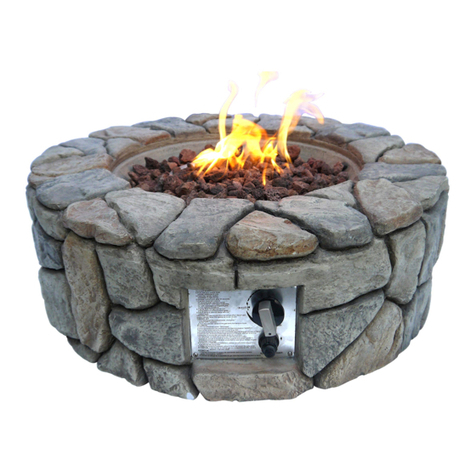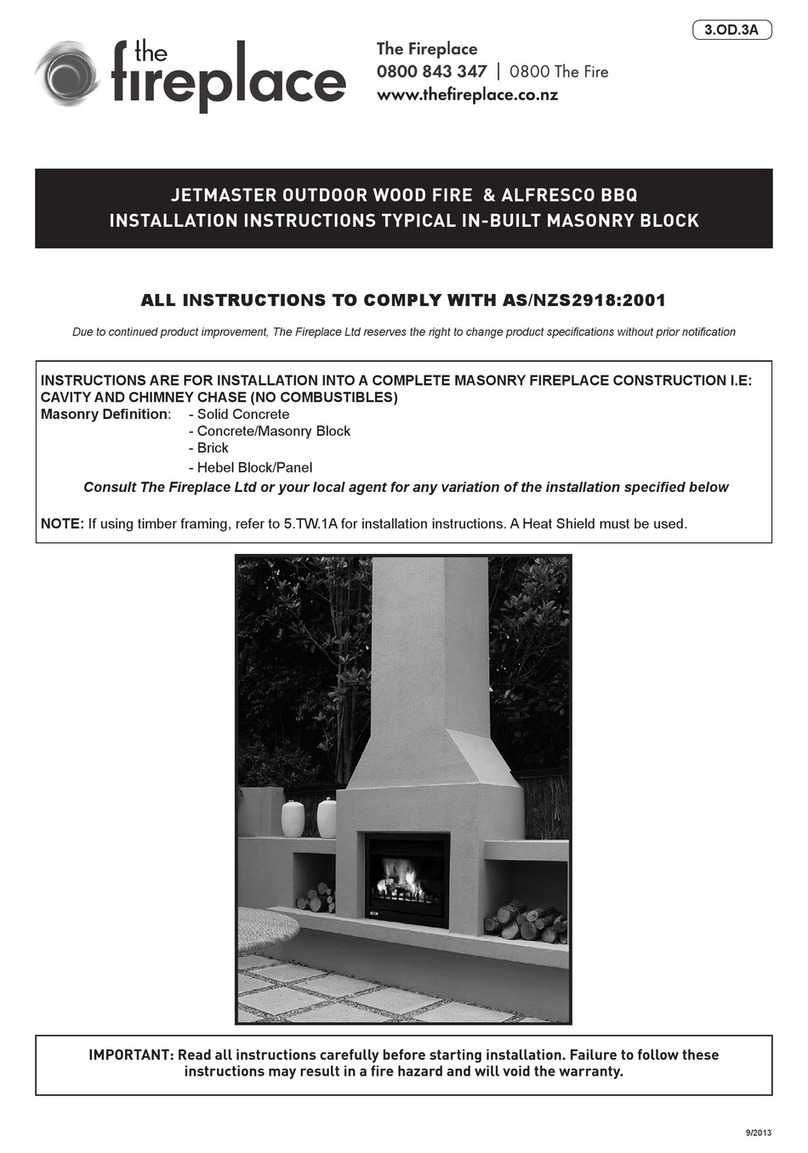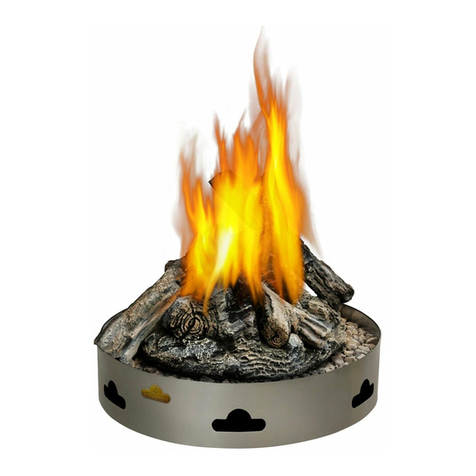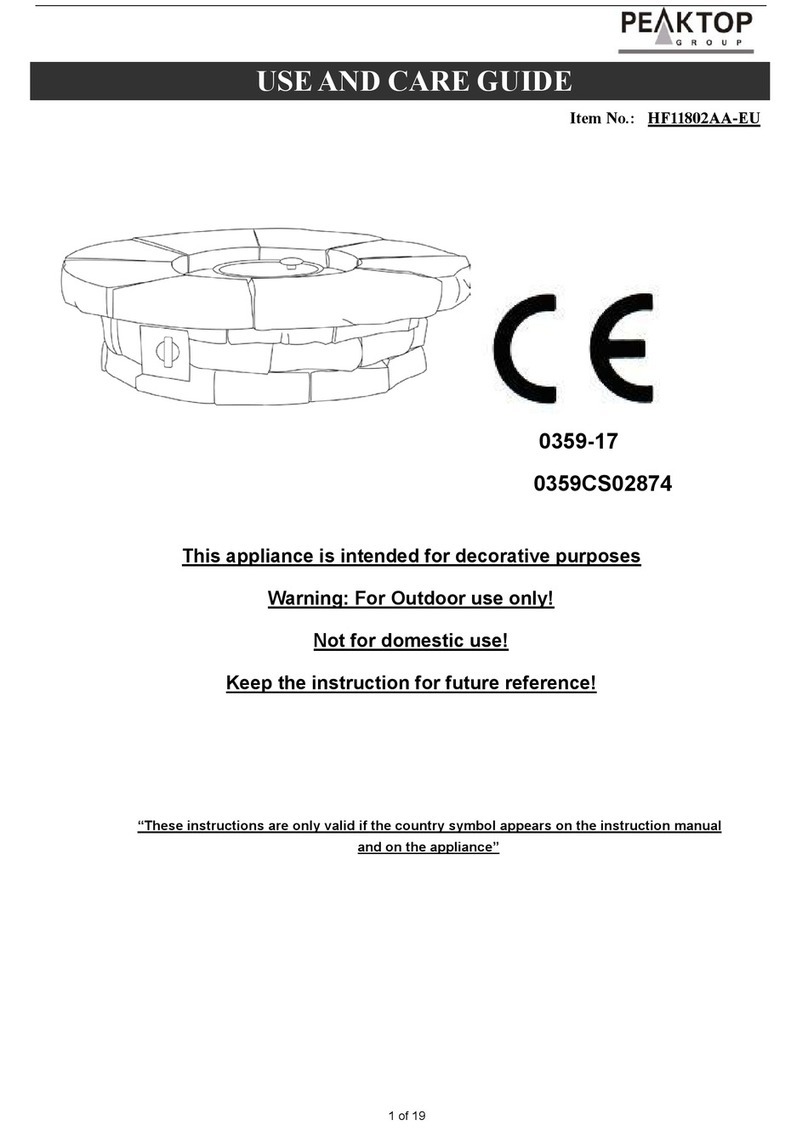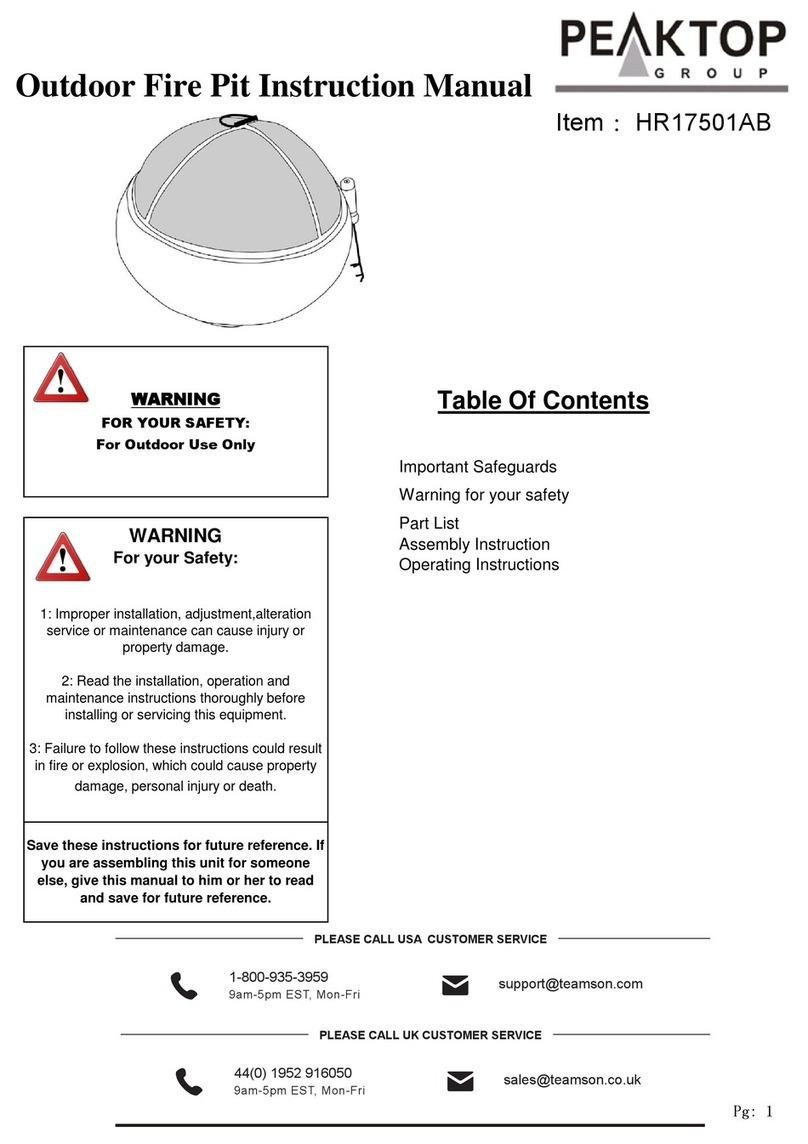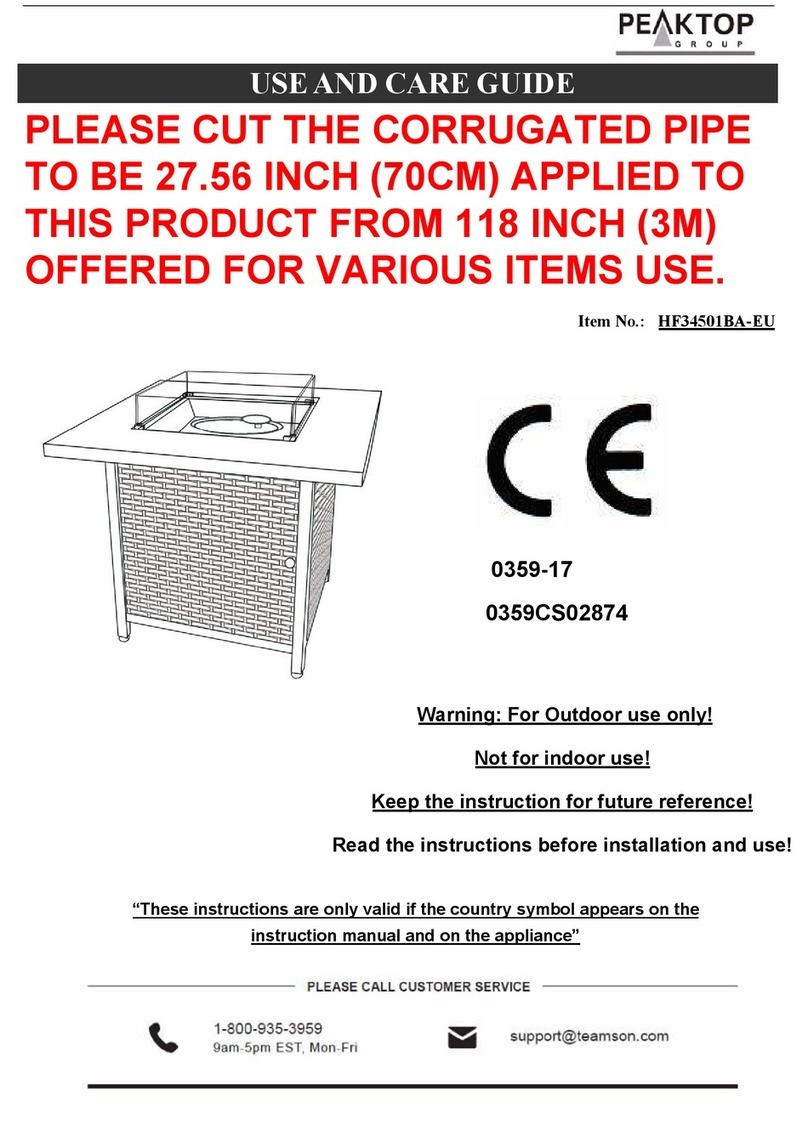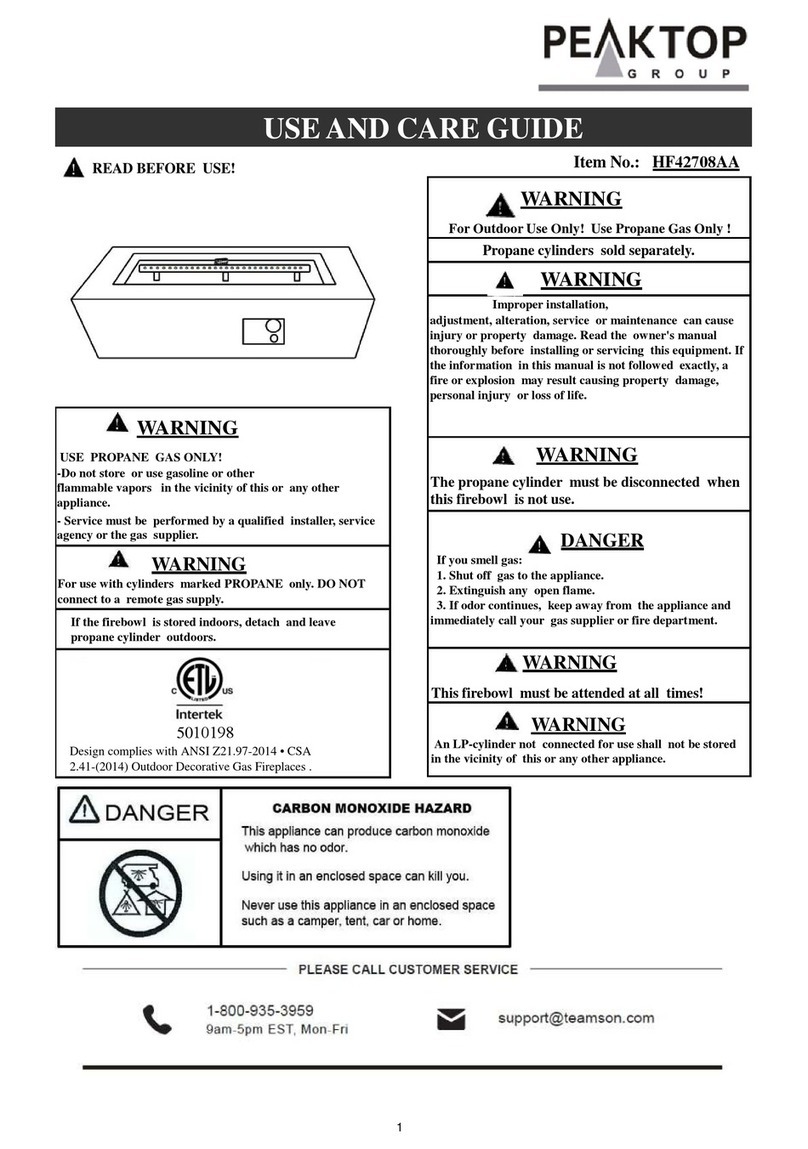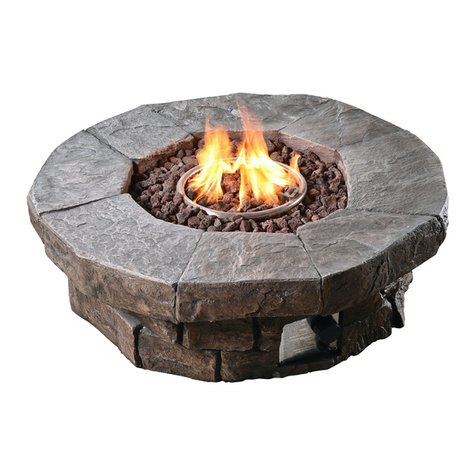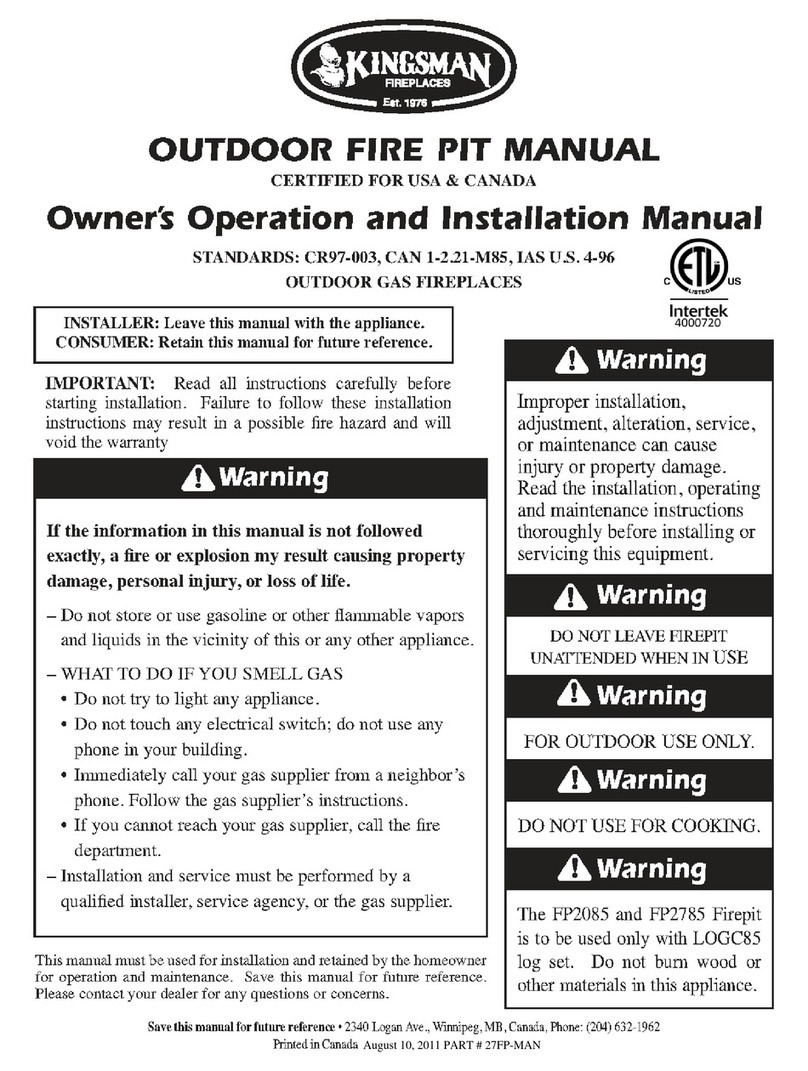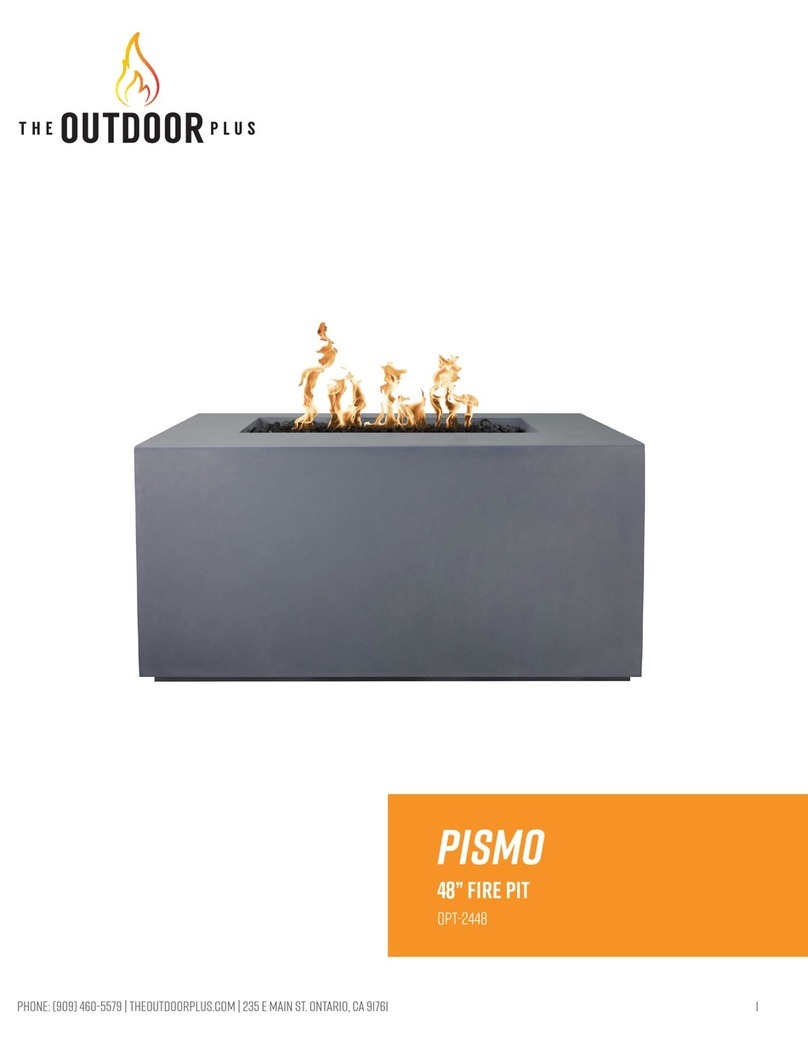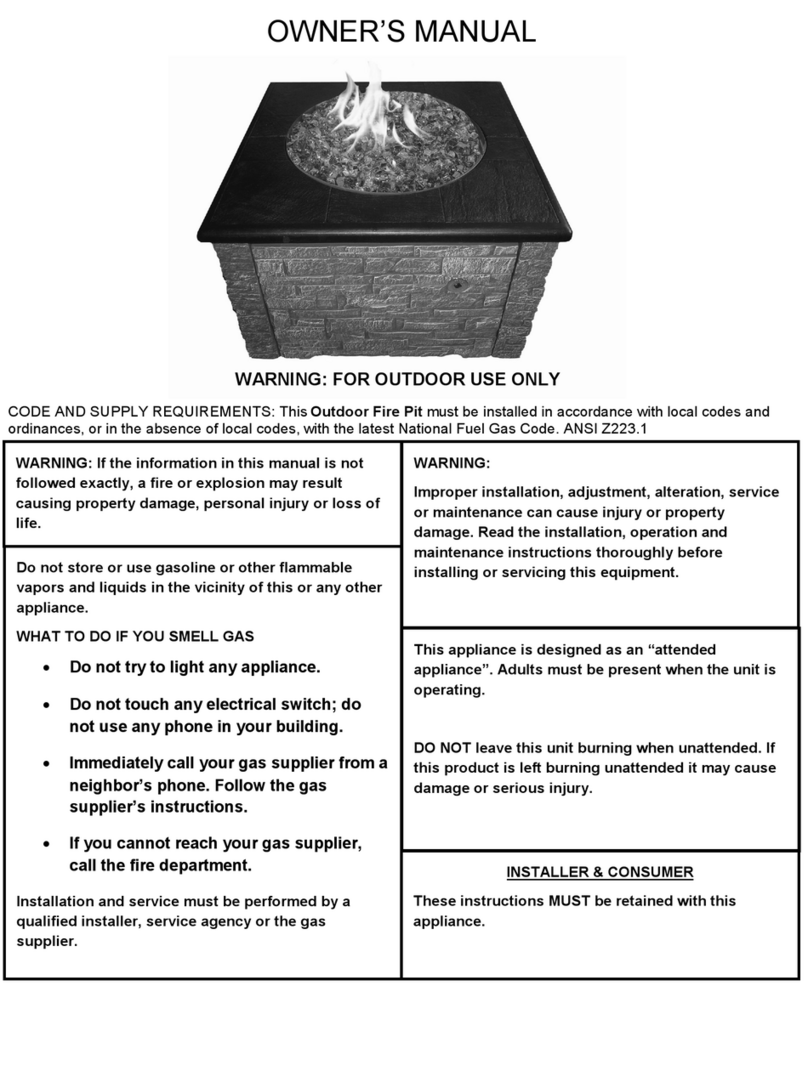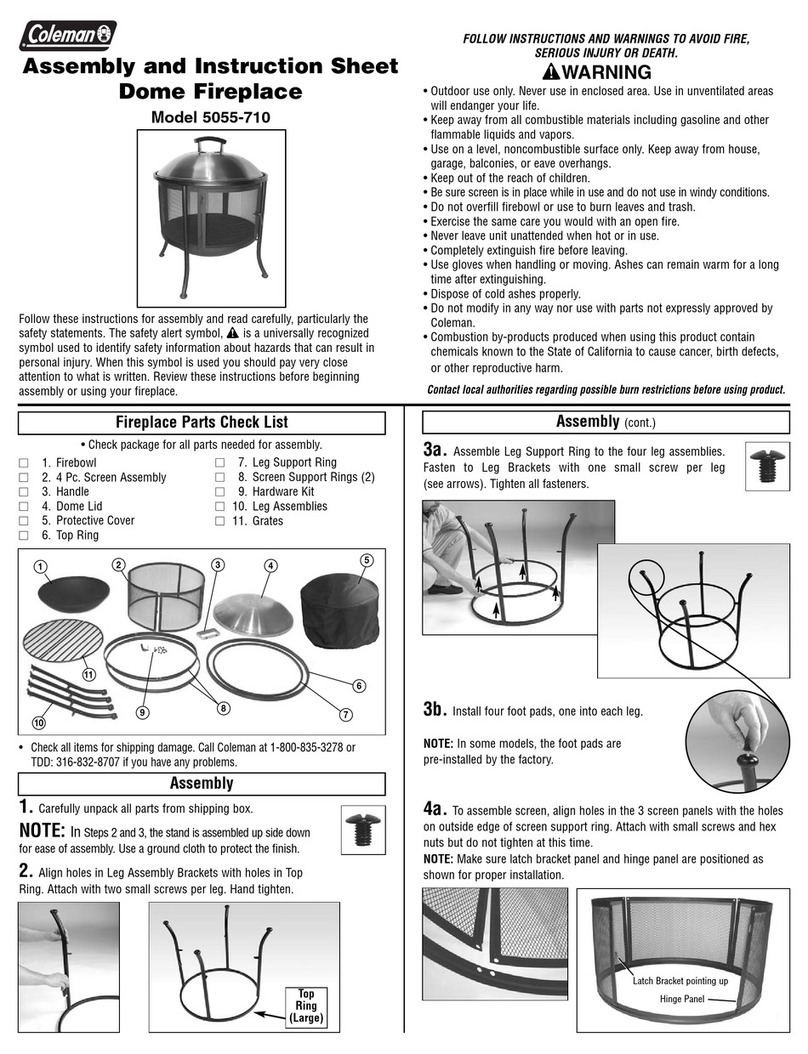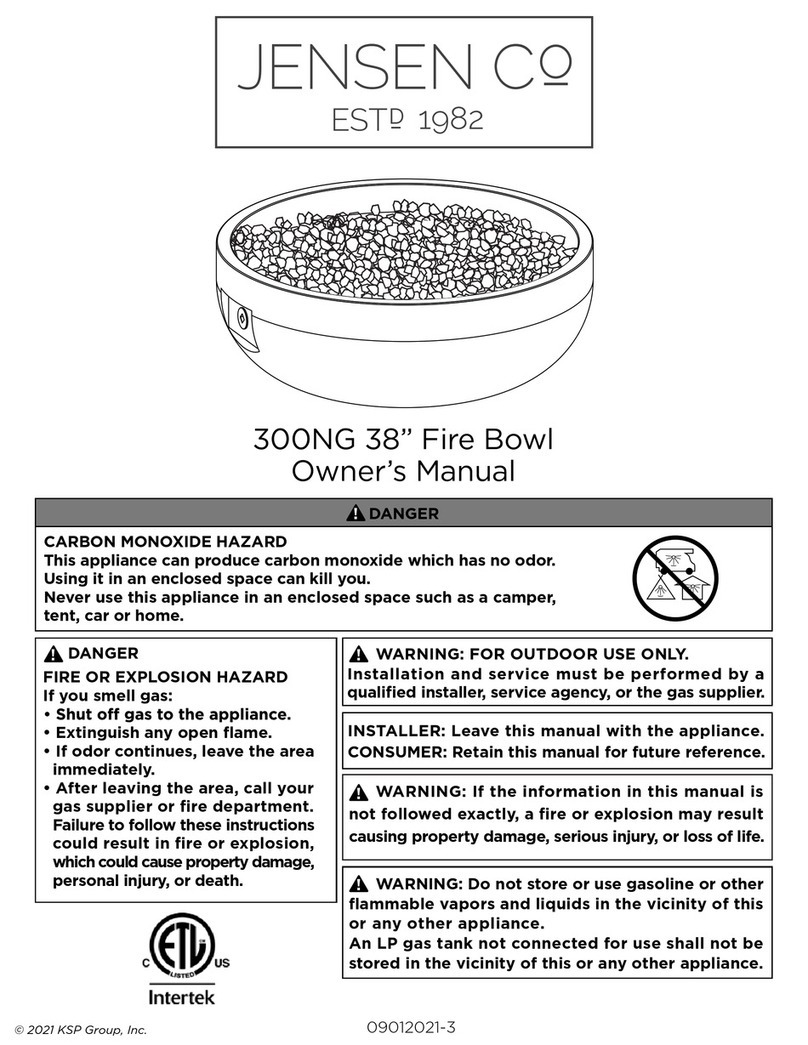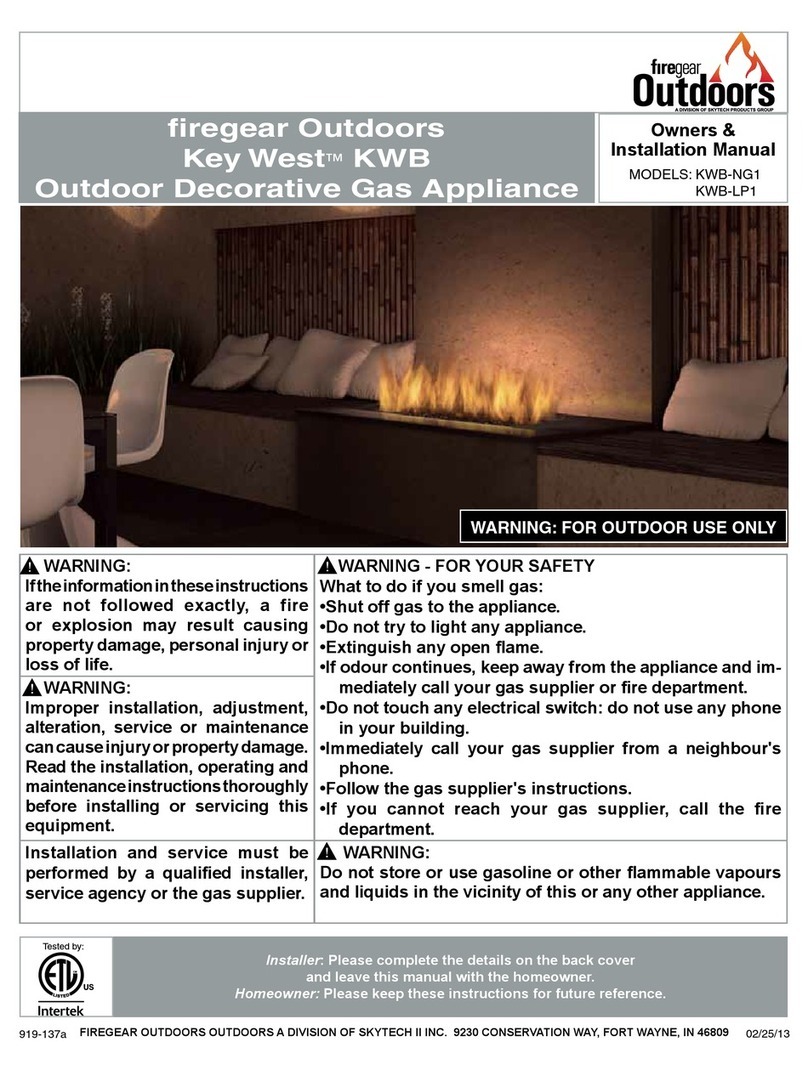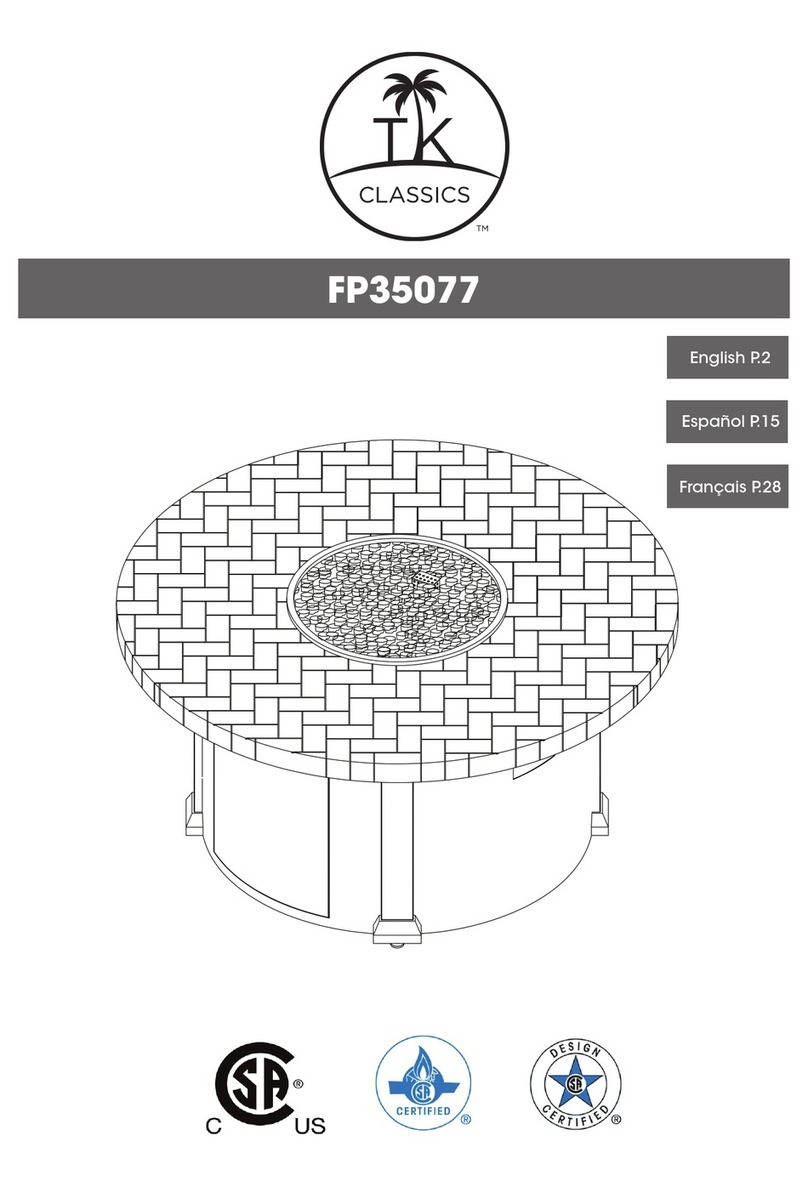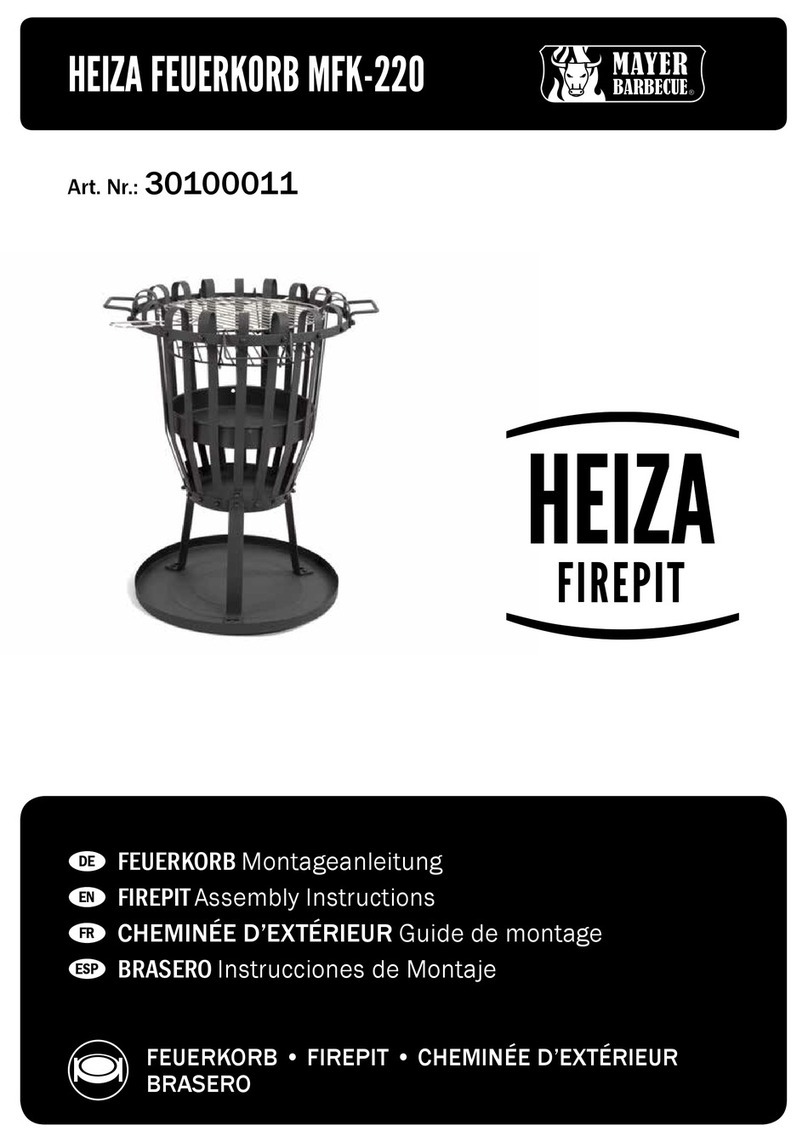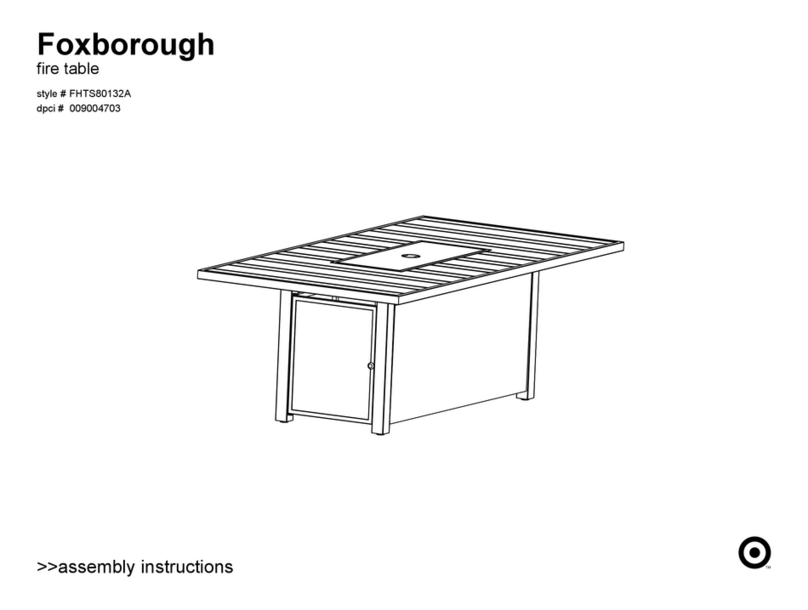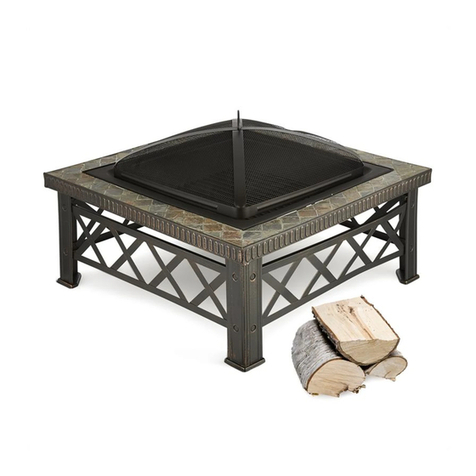
5 of 19
Gloves are strictly recommended to be used while moving this appliance, to protect your hands.
Any sealed parts by Manufacture or his agent can not be altered by the user
Do not store or use gasoline or other flammable vapors and liquids within 25 feet (7.62m) of this or any other
Do NOT store any combustible materials in the base enclosure.
The use of alcohol, prescription or non-prescription drugs may impair an individual’s ability to properly
assemble or safely operate this fireplace.
Do not use in an explosive atmosphere. Keep gas fireplace area clear and free from combustible materials,
gasoline and other flammable vapors and liquids.
This outdoor fireplace is NOT to be operated by children. Young children should be closely supervised when
in the vicinity of this outdoor fireplace.
This outdoor fireplace is not to be installed or used in or on recreation vehicles and/or boats.
Always use in accordance with all applicable local, state and national codes. Contact your local fire
department for details on outdoor fires.
Use the same precautions you would with any open fire with this outdoor fireplace.
Do NOT burn solid fuels such as: wood, charcoal briquettes, lump charcoal, manufactured logs, driftwood,
trash, leaves, paper, cardboard, plywood, painted or stained or pressure treated wood in this outdoor
Do NOT alter this outdoor fireplace in any manner.
Do NOT use this outdoor fireplace until it is COMPLETELY assembled and all parts are securely fastened
Do NOT store another LP gas tank within 10 feet (3.05 m) of this outdoor fireplace while it is in operation.
Do NOT use this outdoor fireplace near automobiles, trucks, vans or recreational vehicles.
Do NOT use this outdoor fireplace under any overhead or near any unprotected combustible materials. Avoid
using near or under overhanging trees and shrubs.
Always use this outdoor fireplace on a hard, level, non-combustible surface such a concrete, rock or stone.
An asphalt or blacktop surface may not be acceptable for this purpose.
Do NOT use this outdoor fireplace if any part has been under water. Immediately call a qualified service
technician to inspect the fireplace and to replace any part or control system and any gas control which has
Do NOT wear flammable or loose clothing when operating this outdoor fireplace.
Do NOT use in windy conditions.
Keep all electrical cords away from a hot outdoor fireplace.
Certain areas of this outdoor fireplace will become too hot to touch during and after use . Do not touch hot
surfaces until the unit has cooled unless you are wearing protective gear such as insulated pot holders or heat
resistant gloves or mittens to avoid burns.
Children and adults should be alerted to the hazards of high surface temperatures and should stay away to
avoid burns or clothing ignition.
Do NOT hang or place clothing or other flammable materials on or near the gas fire-place.
Any guard or other protective device removed for servicing the fireplace must be re-placed prior to operation.




